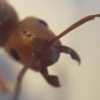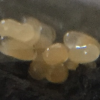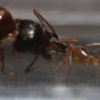I absolutely love looking at my ants for extended periods of time, but I hate having to go to the back of the closet every time just to check up on them. I know some species are less affected by this than others. For example my L. claviger queen and her host workers could care less if they are covered up or not (I keep them in the dark just in case) but all My Camponotus queens throw a fit when I expose them to light.
Basically, I just want to know If there are any good ways to accustom your ants to not being covered up 24/7 or if forcing them into the light will have any negative effects at all.





















